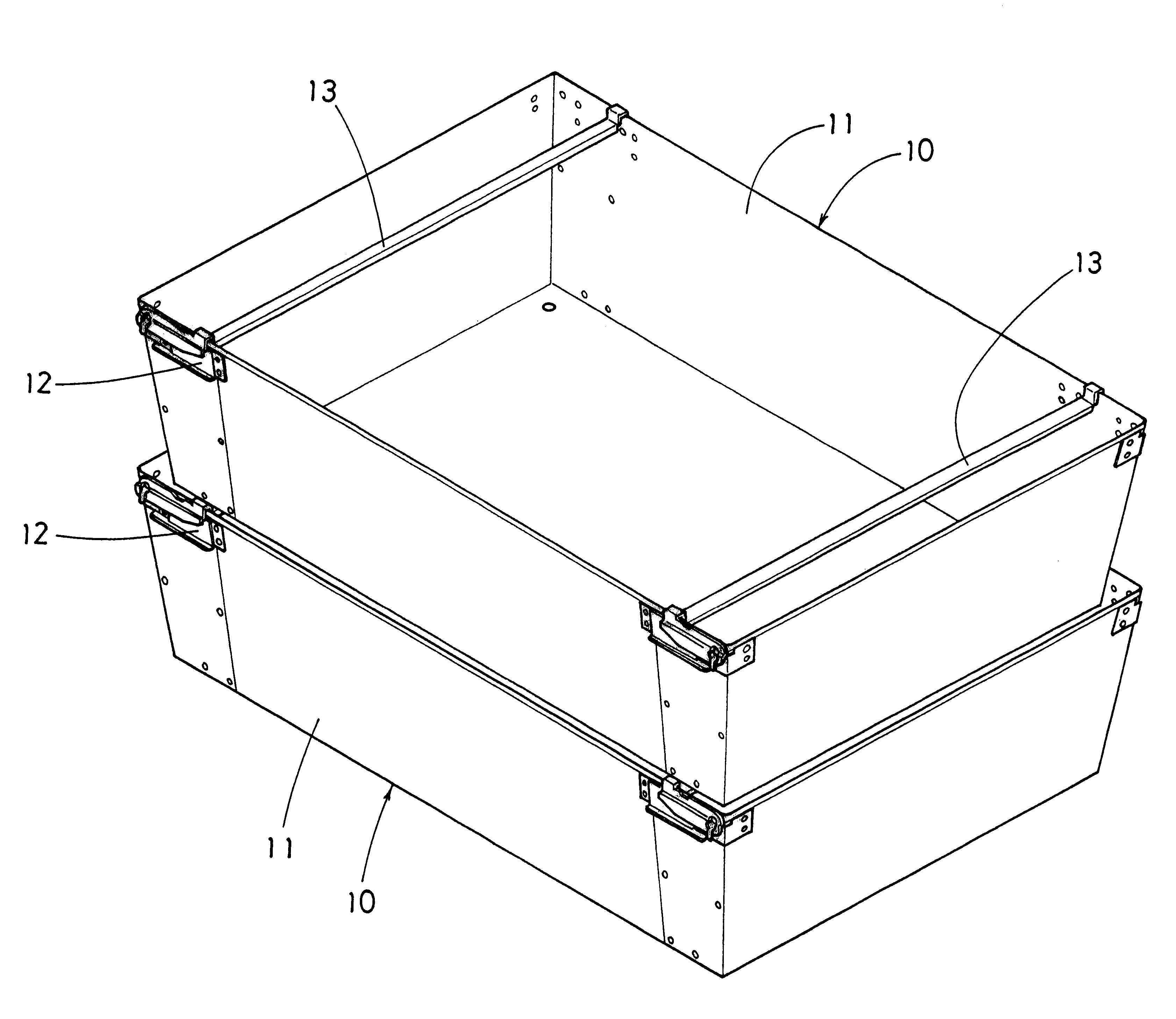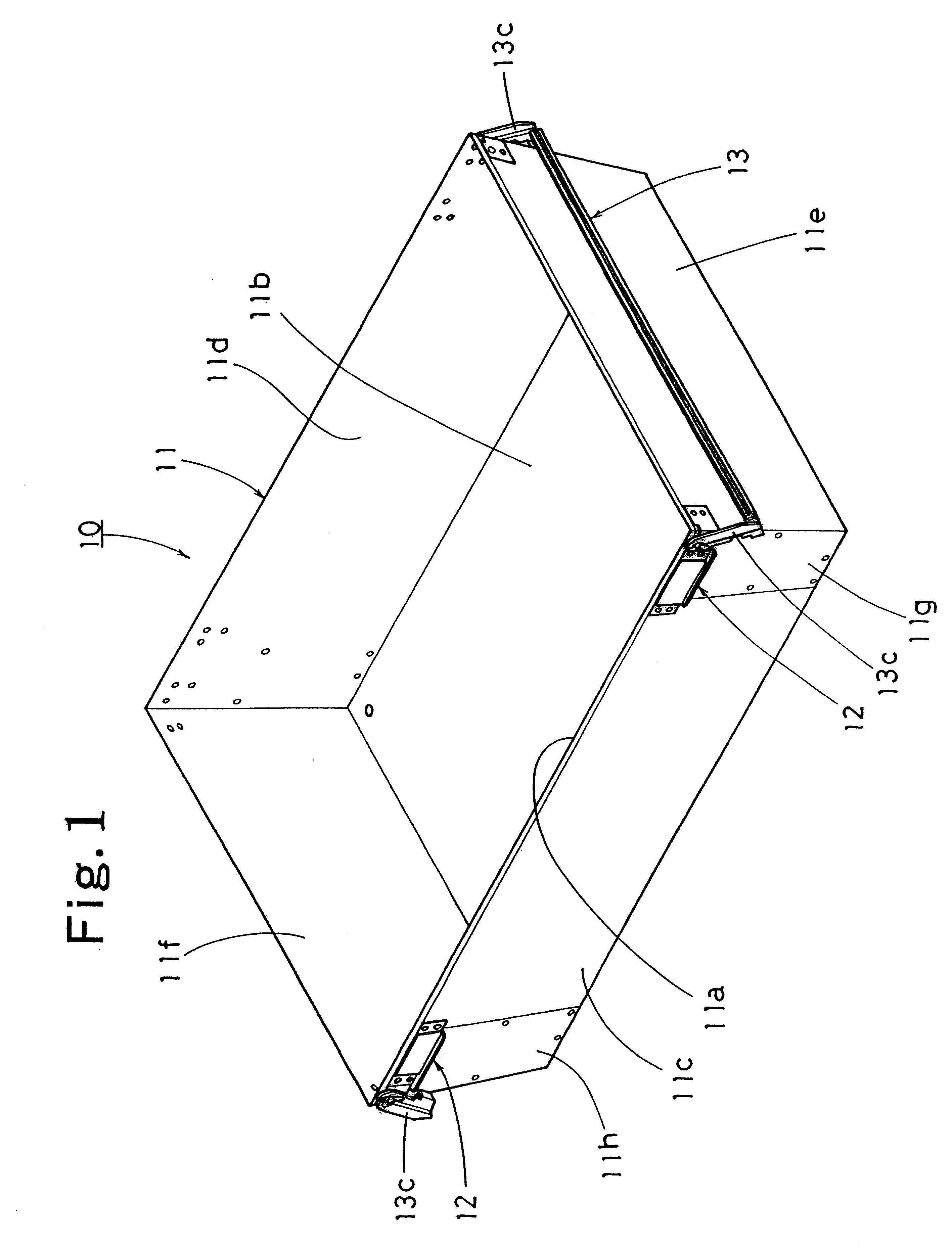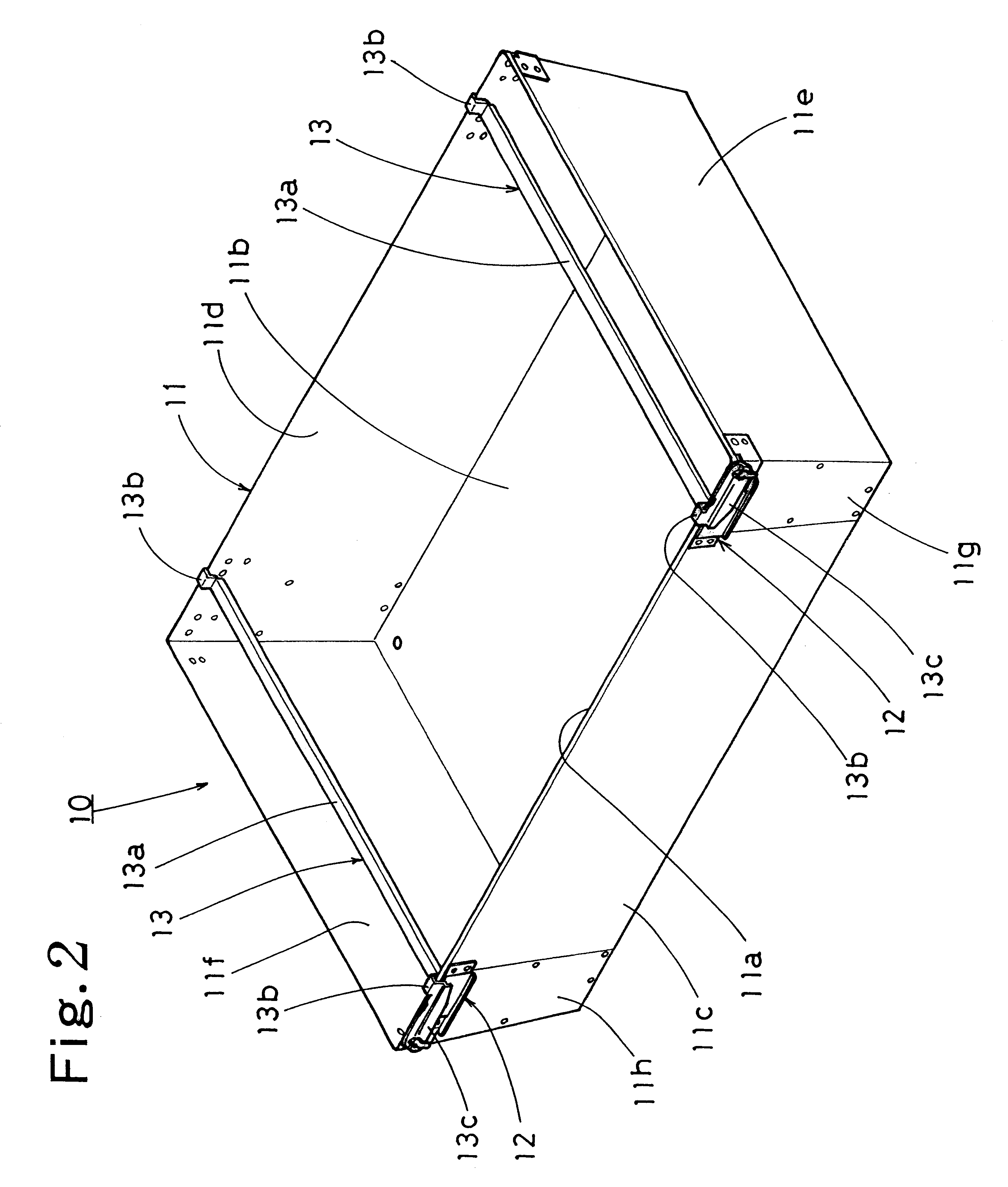Transportation container
a technology for transporting containers and containers, applied in the field of transporting containers, can solve the problems of container clinging to one another due to self-weight, container lids are prone to being lost, and cannot be laid on one another during transportation
- Summary
- Abstract
- Description
- Claims
- Application Information
AI Technical Summary
Benefits of technology
Problems solved by technology
Method used
Image
Examples
Embodiment Construction
One embodiment of the present invention will be described with reference to the accompanying drawings. Referring to FIGS. 1 and 2, a transportation container 10 of the embodiment is shown. The container 10 comprises a generally box-shaped body made of a steel plate and a pair of handles 13 rotatably mounted on the body 11 by generally L-shaped brackets 12. The body 11 has a generally rectangular open upper end 11a, a bottom 11b and four side walls 11c to 11f. The side walls 11c to 11f are inclined downwardly inward so that a cross-sectional area of the body 11 is gradually decreased from the upper end to the bottom of the body 11. The side wall 11e has both ends formed with bent portions 11g respectively. The side wall 11f has both ends formed with bent portions 11h respectively. The bent portions 11g of the side wall 11e are welded to the side walls 11c and 11d respectively. The bent portions 11h of the side wall 11f are also welded to the side walls 11c and 11d respectively.
Each h...
PUM
 Login to View More
Login to View More Abstract
Description
Claims
Application Information
 Login to View More
Login to View More - R&D
- Intellectual Property
- Life Sciences
- Materials
- Tech Scout
- Unparalleled Data Quality
- Higher Quality Content
- 60% Fewer Hallucinations
Browse by: Latest US Patents, China's latest patents, Technical Efficacy Thesaurus, Application Domain, Technology Topic, Popular Technical Reports.
© 2025 PatSnap. All rights reserved.Legal|Privacy policy|Modern Slavery Act Transparency Statement|Sitemap|About US| Contact US: help@patsnap.com



